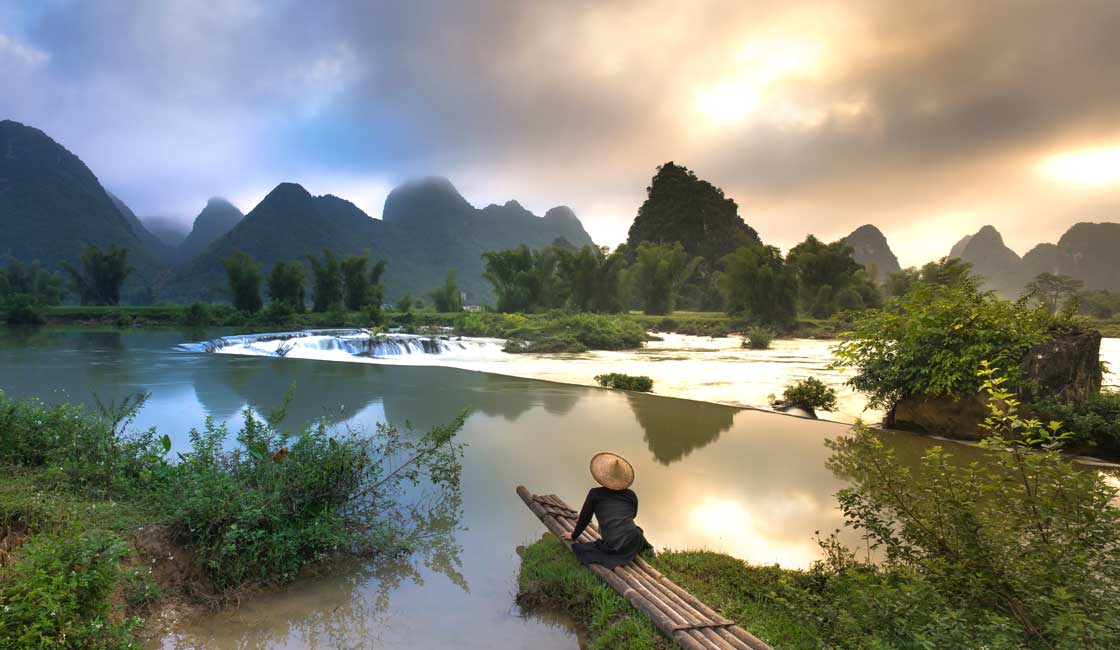
The quick answer to this is: there is never a bad time of the year to visit Vietnam. No matter when you go, you’re sure to find things that make your trip unique. However, if you want to dig a little deeper, there is inevitably a bit more to it than that.
In this blog post, we’re going to journey through some of the most iconic destinations in the country to give an all-encompassing guide on when to go to Vietnam. It helps to think of Vietnam as three separate destinations, with three distinctive weather systems – something to consider when thinking of all the things to do in Vietnam.
Vietnam is a long, thin, meandering country that stretches for thousands of miles down the entire eastern border of Southeast Asia. This is part of the reason why the country is such a thriving travel destination that boasts a bit of everything – it has mountains, beaches, rainforests, waterways, a river delta, mangroves and heaps of cultural authenticity. Because of its diverse topography, it also has three fairly distinctive climates, each affected differently by the southwesterly monsoon and northeasterly monsoons. Roughly speaking, they are north Vietnam, central Vietnam, and southern Vietnam.
North Vietnam has four seasons, with more variation in temperature throughout the year than other areas of the country. November, December and January are winter, February, March and April are spring. Winter and spring have generally cool, dry weather and average temperatures of 17-22°C. December and January can get particularly chilly and frosty up here, and you’ll sometimes see snow in Sapa and in the mountains to the north!
However, this is generally considered the best time of year to travel to Hanoi and the north – little rain, clear skies and generally mild temperatures. To be even more specific – November and April (the start and end of this drier part of the year) is a particularly good time to visit the north as you’ll benefit from the dry and mild weather, while still retaining longer amounts of sunlight per day.
Summer and fall land between May and October and this is when north Vietnam gets pretty hot and humid, with plenty of rainfall (the wettest months being July through to September).
Let’s look at how these seasons affect some of north Vietnam’s top destinations:
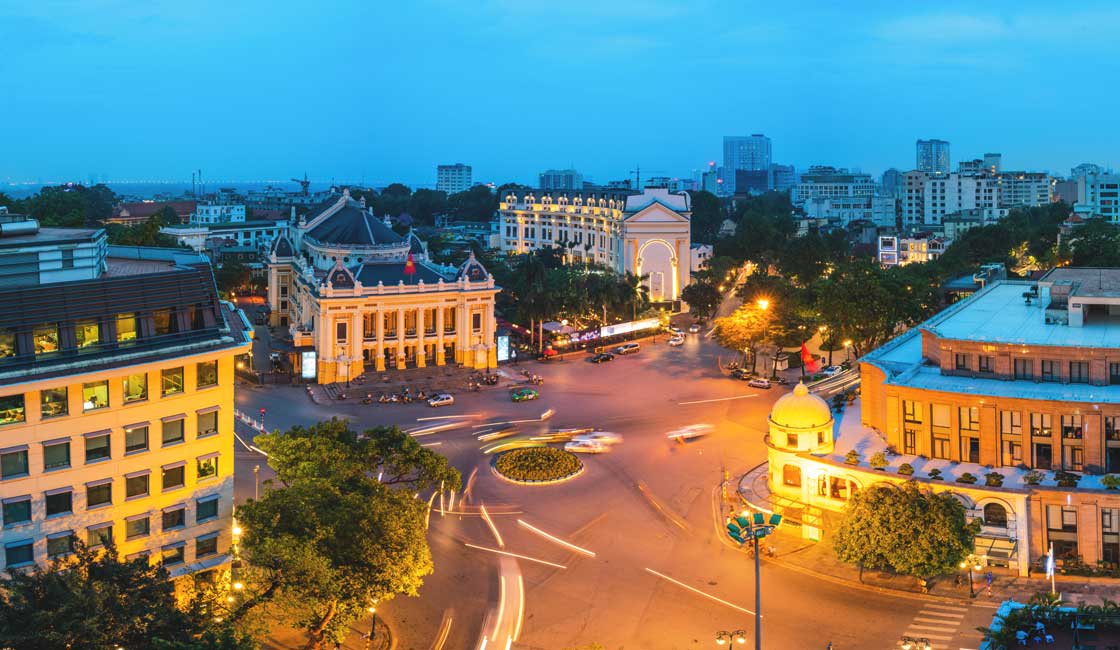
Hanoi center
It’s in the north of the country where you can find Vietnam’s hectic and bustling capital – Hanoi. An ancient city that pays testament to Vietnam’s checkered past, throughout Hanoi you can see evidence of the periods of French and Chinese occupation amid the modern-day car-horns and squealing scooters. A hot pot of noisy markets, immersive arts, and world-class gastronomy, Hanoi is very much worth a visit.
Because of the city’s latitude, temperatures here are quite extreme. Winter weather can feel pretty cold in Hanoi, while the summer months (May to September) can be unbearably hot and sticky, with not much wind to cool you down! The best time is October – November, and March – April. This is when you’ll get a lovely balance of temperatures, blooming flowers, sun, and rain.
Some also say that fall in Hanoi is a romantic, nostalgic time of year…
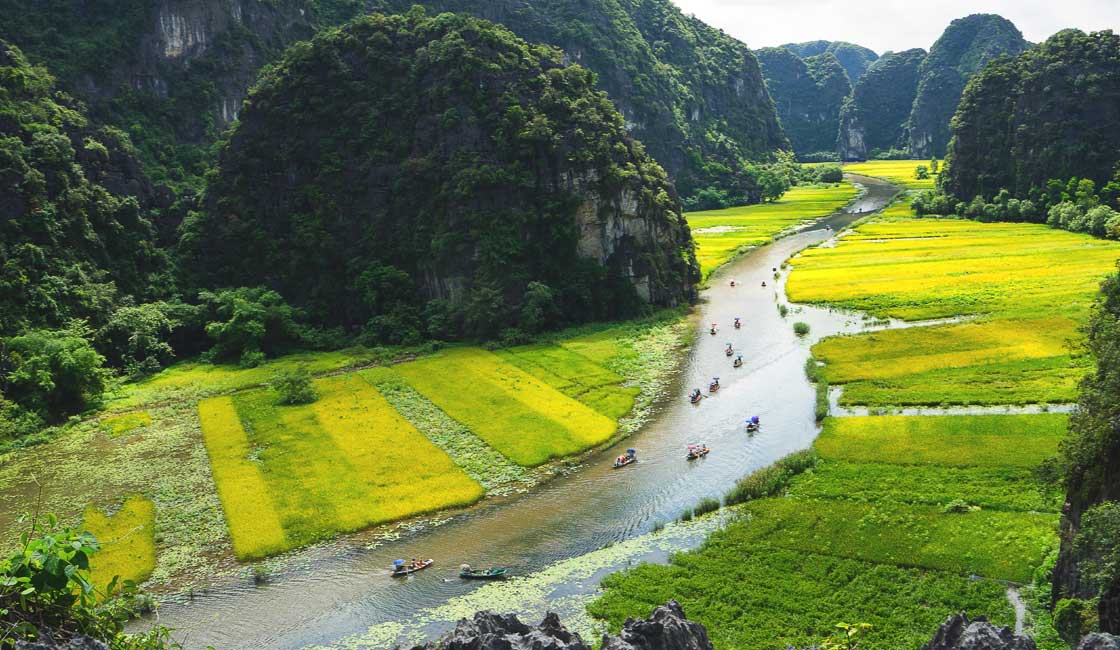
Spectacular Ninh Binh
Off the beaten path, Ninh Binh province is a beautiful region to the south of Hanoi, that has managed to remain off most tourists’ checklists. This means you can normally enjoy natural beauty (such as UNESCO listed Trang An Grottoes), nature reserves (like Cuc Phuong National Park) and cultural sites (including Bich Dong Pagoda) in all their peaceful authenticity.
On the whole, this is one area of Vietnam that is appealing year-round, and most would argue there is no bad time for a Ninh Binh tour. Summer (May – October) can be a bit uncomfortably hot and wet, but the rainy season is also when the floating rice fields in Tam Coc are at their most colorful and golden-green. September is high typhoon season so perhaps avoid traveling at this time.

Halong Bay at dusk
There is nothing quite like the breathtaking Halong Bay, found in northeast Vietnam. Emerald waters peppered with rainforest-clad karst islets. Unbelievable biodiversity, and colorful floating markets. An adventurer’s paradise, with kayaking, climbing, caving, scuba diving, and hiking galore – all available through multiple day or overnight cruises.
Halong Bay subscribes to the same four-season weather system as the rest of north Vietnam. For the most temperate conditions, warm days, and clear skies, it is recommended to visit here in the shoulder months of October – November, and March-May. The water is too cold for swimming in the winter, and although summer can be an enjoyable time to swim, kayak, and go caving, high summer (July to September) has extreme rainfall which can sometimes stop boats from sailing in the bay.
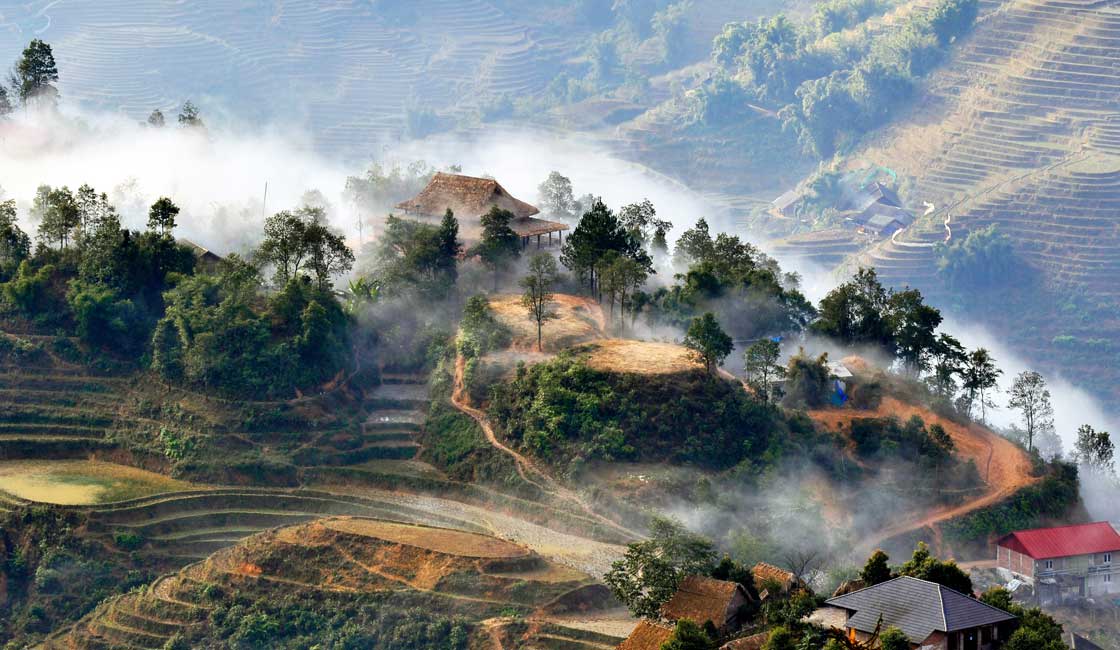
Misty hills of Sapa
High in the Hoang Lien Son Mountains of northwestern Vietnam lies Sapa, a heavenly highland town close to the Chinese border and an ideal trekking base. The landscapes around here are staggering, with iconic terraced rice fields, waterfalls, thick pine tree forests swirling with morning fog, flower valleys and extraordinary mountain peaks. Most of the town’s population is made up of different ethnic tribal groups, and it’s a wonderfully immersive place to come and soak up the local indigenous culture.
Due to its mountainous location, Sapa has very distinct seasons and it’s worth taking some time to choose when to visit. Known as the ‘frosty city’, it is very cold in the winter and frequently sees snowfall. However, winter here is a wonderful time of celebration with plenty of local ethnic festivals. Summer is the rainy season, and this can be a dangerous time to travel into the mountains.
Most people say that once again, the shoulder months of April and October are good times of the year to visit Sapa because of the mild and clear weather for trekking. However, it’s worth remembering the terraced fields will be at their most impressive after the wet season, so September – November is probably the ultimate time to travel.
Central Vietnam is a bit of a strange one climate-wise, as a number of factors (such as the shelter of the Truong Son mountain range) affect areas within it differently. Broadly speaking, it is hot throughout the year, but there are two main seasons in central Vietnam. The hot and dry season between January and August, with temperatures averaging in the 30s (Celsius), and the hot rainy season (bringing storms and flooding) from September to December.
Here’s how the climate can affect your trip to some key places in central Vietnam:
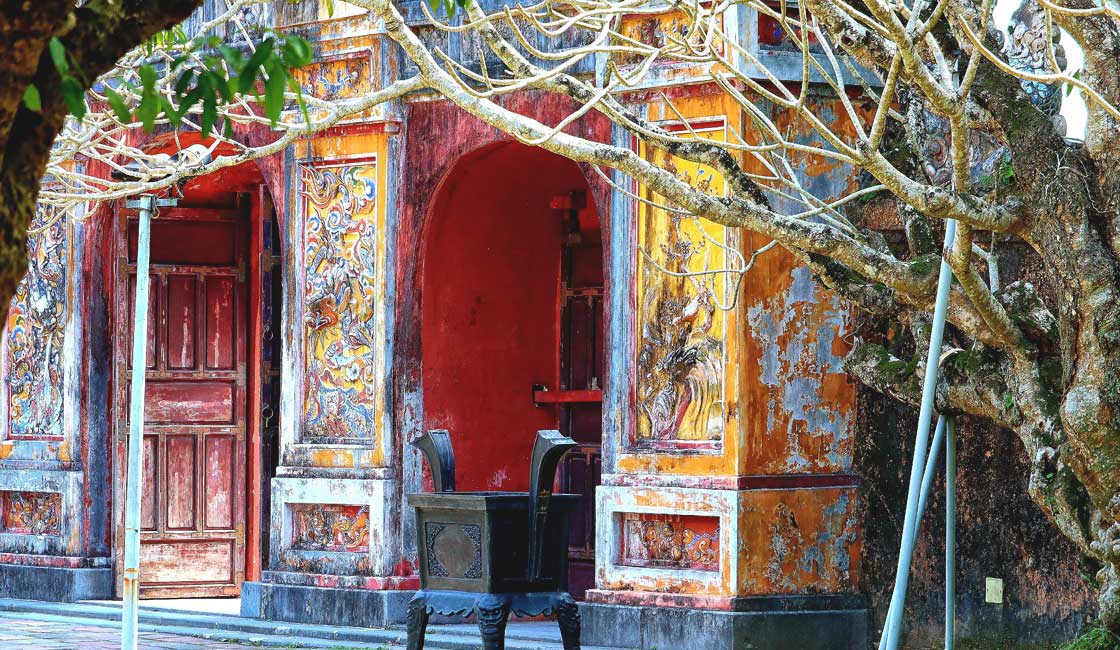
Hue typical architecture
This is one of the most ancient cities of Vietnam and the country’s former capital during the Nguyen Dynasty. Because of this, it bears an almighty cultural legacy, including the famous moated Dai Noi citadel, palaces and shrines. It’s found on the banks of the brilliantly named Purple River.
Also subject to central Vietnam’s binary climate, Hue is best visited in the spring which happens between February and April, because temperatures are mild and pleasant and there is barely any rain. However, if you can bear the heat, June and July is a beautiful time to visit the city with crystal clear blue skies.
The city also hosts the biannual Hue Festival between April and June – a mad and eclectic celebration of Vietnam’s history, featuring street performances, live re-enactments of royal events, boat races and plenty of music and food!
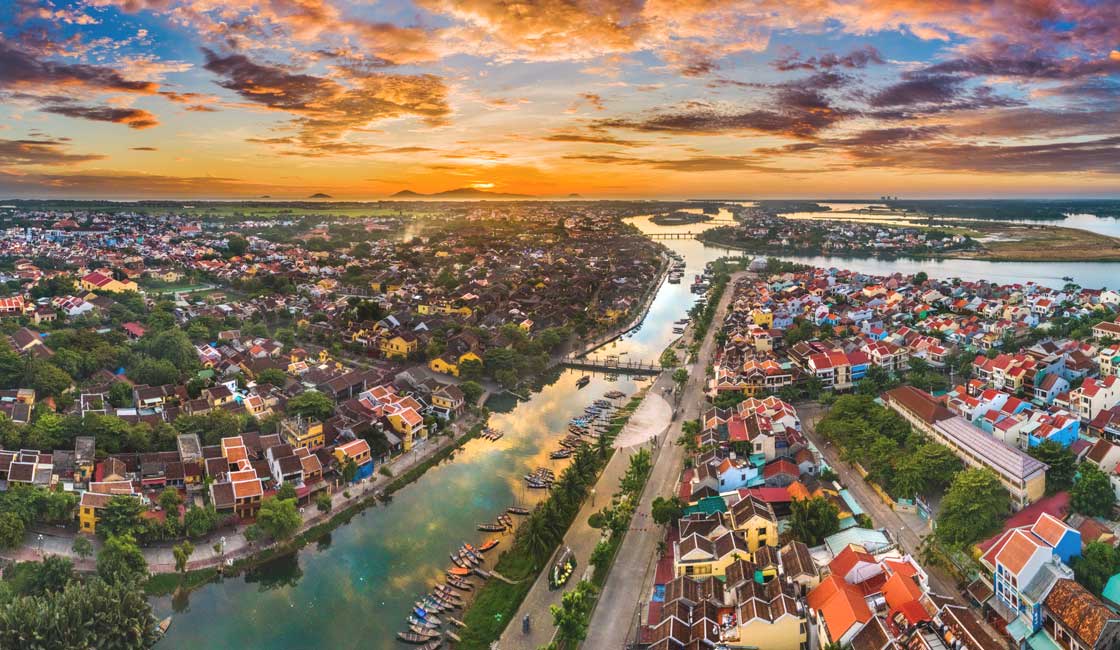
Hoi An used to be an important port
About halfway down Vietnam, Hoi An is a coastal town and 17th-century trading post steeped in history. It’s an ancient and beguiling town sitting on the Thu Bon river with beautiful architecture and a dreamy, fairytale atmosphere. Hoi An really comes alive after dark with its busy night markets and beautifully lit up streets.
Like most central Vietnam, Hoi An has two seasons, the dry and the wet. As a riverside town, it is particularly vulnerable in the rainy season and generally floods annually in October and November so is best avoided at this time. Typhoons and brutal storms can ravage the coastline near here between August and November, so it’s recommended to stick to the dry season for Hoi An.

Nha Trang is a popular weekend destination
Nha Trang is a coastal city about three-quarters of the way down Vietnam. It is visited and beloved for its long stretches of gorgeous coastline and beaches, and often called the Riviera of the South China Sea. It’s a resort town so wields a hefty nightlife scene, with a cosmopolitan vibe and its fair share of tourists.
Nha Trang benefits from a longer dry season than elsewhere, stretching from the beginning of January to the end of August. After that, however, the short wet season can see heavy typhoons and storms hitting the coast – something to bear in mind if you want a relaxing beach holiday!

Dalat
The town of Dalat nestles in the central highlands of Vietnam and bears the nicknames ‘city of a thousand pine trees’, ‘city of love’ and ‘city of eternal spring’. The capital of Lam Dong Province, Dalat is encircled with pine forests, waterfalls and lakes and is a popular spot for adventure sports.
It has a unique subtropical highland climate being temperate and mild all year round, with valleys lined with beautiful curling mists. The dry season is from December to March, and the rainy season runs from April to November, but the temperature remains between 16°C and 24°C throughout the year. Although the rainy season can make outdoor activities a bit trickier, if you can bear a bit of wet weather, the countryside is at its most vibrant and green during this time!
Southern Vietnam is heralded for its stunning archipelagos and beach resorts, and it also has a thriving fishing industry and an interesting past with many vestiges of Cham architecture. It’s the proud home of Vietnam’s capital city, the vast and extraordinary Mekong Delta, as well as magnificent islands including Phu Quoc and Con Dao.
This part of the country has two prevailing seasons – the hot and dry season runs from November to April, and the hot wet season runs from May to November. Temperatures remain high all year round, and without the Truong Son mountain range which protects the country further up, southern Vietnam is subjected to much heavier rainfall during the wet season (the highest during June, July, and August).
Let’s see how the most popular places in southern Vietnam fare at different points in the year:

Saigon River
Ho Chi Minh City (HCMC), formerly known as Saigon, is Vietnam’s most populous city and the financial center of the country. It’s found on a bend of the Saigon river in southeast Vietnam, and is a giddy whirlwind of energy and culture – a city that does not get much sleep! It’s full of fascinating architecture that pays witness to its mixed heritage, from French colonial buildings to Chinese pagodas. It is a “love me or hate me” kind of a city, but one is certain – you shouldn’t skip Saigon on your tours.
The ideal time to be in this high-energy cultural hub is in the dry season, between December and April. The temperature will be perfect for exploring, and skies are clear with not much chance of rain. The tropical rains between May and December – despite being sometimes refreshing – can make city tours problematic and often bring flooding to HCMC, although the downpours don’t tend to last very long.
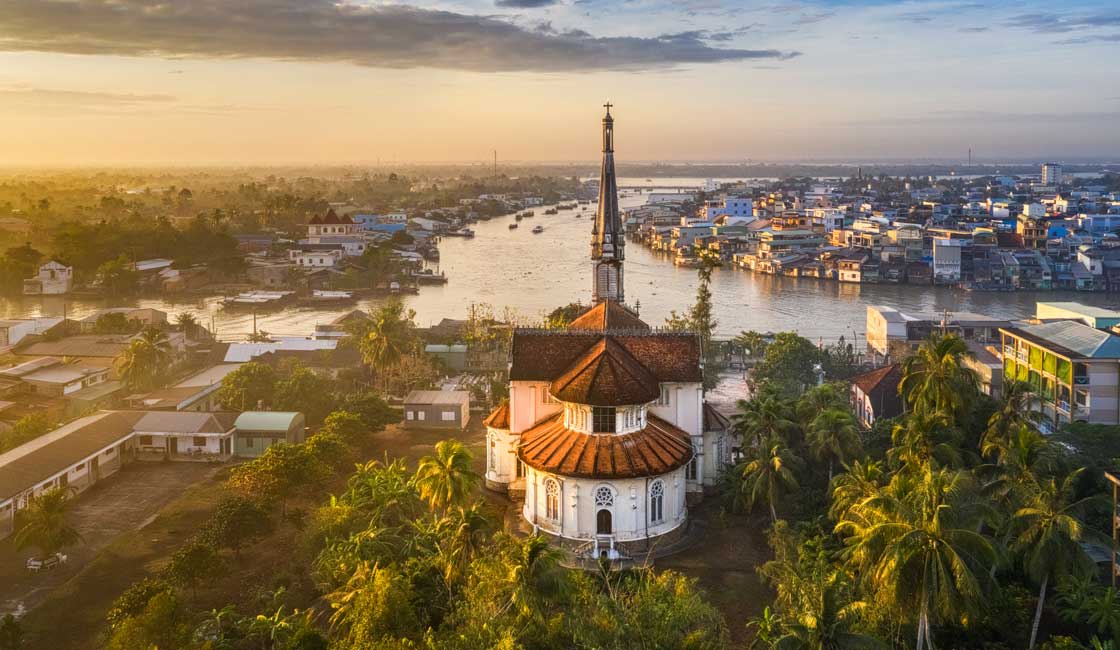
Cai Be church and the Mekong
Not far from Ho Chi Minh City is the extensive verdant region that holds the Mekong River, a totally unique and unforgettable network of waterways and mangroves. This is where the mighty Mekong empties into the sea, and everything here revolves around the movement of the river. A crisscrossing labyrinth of channels, it’s best explored by boat, where you can visit the iconic floating markets of Cai Be and Cai Rang.
The rainy season in the Delta is roughly between May and August, and as you can imagine, the Mekong Delta can get quite hot and stuffy during this time. But this brings the region to life, and as you’re likely to be traveling by boat, the higher water levels do little harm. September to November is considered a great time to visit the Mekong Delta because most of the rains have come already, and the waters are swollen and full of river craft! It’s also a good time for a Mekong river cruise, as the high water levels allow reaching places otherwise not accessible.
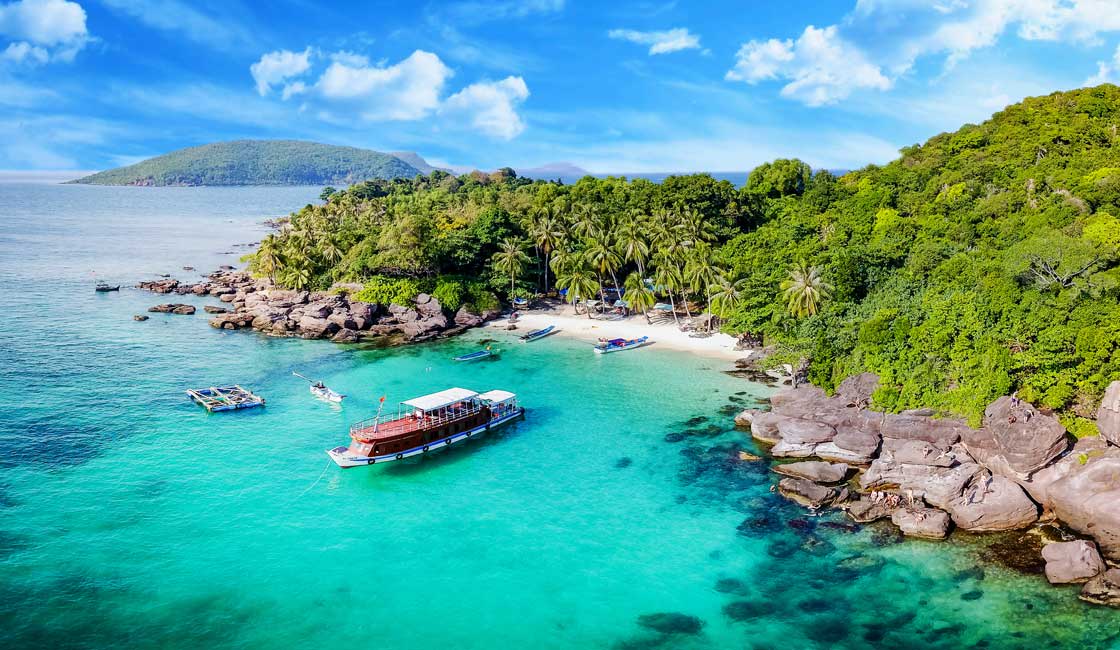
It’s always beach time in Phu Quoc
Tucked right around the southwestern coast of Vietnam (in fact, it’s more off the bottom of Cambodia!) is the sought-after Phu Quoc Island with all its white sands, palm trees, mountains, and jungles.
You can visit Phu Quoc year-round, but outside of the dry season, you should be prepared for showers of rain in the afternoon. The rainy season can sometimes bring stormy weather and floods, so it’s considered a safer bet to head to Phu Quoc between November and March when the climate is hot and dry.
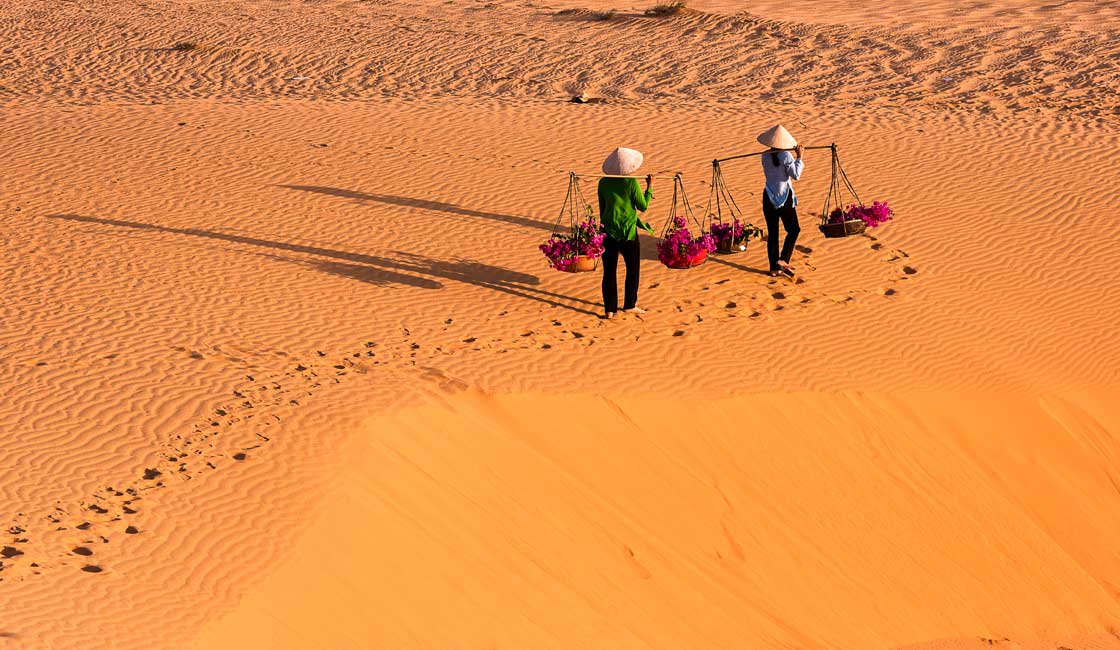
Sand dunes of Mui Ne
Mui Ne is a coastal resort town between Nha Trang and Ho Chi Minh City on the southeast shores of Vietnam. Popular for its beautiful stretches of white sand and palm tree-lined beaches, it’s a great spot for water sports or a break away from the hustle and bustle of Saigon.
Mui Ne is in Binh Thuan province in the south of Vietnam, which is the driest region in all of Southeast Asia. It’s pretty much a top beach all year round, even in the rainy season. However, most say that between August and April is the best time to visit, as there is little to no rainfall and stunning conditions for beaching. Outside of this time, there also tends to be a build-up of seaweed.
If you’re a surfer, however, you might want to ignore this advice, and head there between August and November for the biggest waves!
Hopefully, now you have a better knowledge of when to visit Vietnam and its different sub-destinations. If you have any queries at all about the country, cruises on the Lower Mekong River in Vietnam, and any customized land tours visiting the regions mentioned above, then please contact our sales team. We have expert destination specialists for Asia waiting to take your call.
While Rainforest Cruises aim to provide accurate and up-to-date information, we make no representations as to the accuracy or completeness of any information herein or found by following any link on this site. Rainforest Cruises cannot and will not accept responsibility for any omissions or inaccuracies, or for any consequences arising therefrom, including any losses, injuries, or damages resulting from the display or use of this information.




